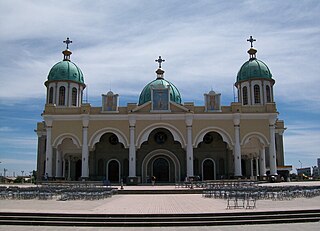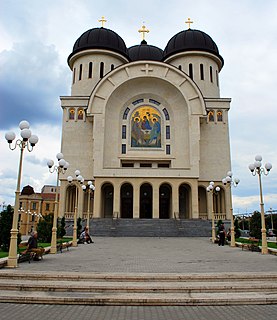Related Research Articles

Modern Paganism, also known as Contemporary Paganism and Neopaganism, is a collective term for new religious movements influenced by or derived from the various historical pagan beliefs of pre-modern Europe, North Africa and the Near East. Although they share similarities, contemporary Pagan religious movements are diverse, and no single set of beliefs, practices or texts is shared by them all. Most academics studying the phenomenon have treated it as a movement of different religions, whereas a minority instead characterise it as a single religion into which different Pagan faiths fit as denominations. Not all members of faiths or beliefs regarded as Neopagan self-identify as "Pagan".

A sect is a subgroup of a religious, political, or philosophical belief system, usually an offshoot of a larger group. Although the term was originally a classification for religious separated groups, it can now refer to any organization that breaks away from a larger one to follow a different set of rules and principles.

A religious denomination is a subgroup within a religion that operates under a common name, tradition, and identity.

The world's principal religions and spiritual traditions may be classified into a small number of major groups, although this is by no means a uniform practice. This theory began in the 18th century with the goal of recognizing the relative levels of civility in societies.
Religion in the United States is diverse with Christianity being the majority religion. Various religious faiths have flourished within the United States. A majority of Americans report that religion plays a very important role in their lives, a proportion unique among developed countries. Freedom of religion in the United States is guaranteed in the First Amendment to the United States Constitution.

The mainline Protestant churches are a group of Protestant denominations in the United States that contrast in history and practice with evangelical, fundamentalist, and charismatic Protestant denominations. Some make a distinction between "mainline" and "oldline", with the former referring only to denominational ties and the latter referring to church lineage, prestige and influence. However, this distinction has largely been lost to history and the terms are now nearly synonymous. These terms are also increasingly used in other countries for the same purpose of distinguishing between the so-called oldline and neo-Protestants.
The anti-cult movement is a social group which opposes any new religious movement (NRM) that they characterize as a cult. Sociologists David Bromley and Anson Shupe initially defined the ACM in 1981 as a collection of groups embracing brainwashing-theory, but later observed a significant shift in ideology towards pathologizing membership in NRMs. One element within the anti-cult movement, Christian counter-cult organizations, oppose NRMs on theological grounds and distribute information to this effect through church networks and via printed literature.
The Christian Research Ministry is a Calvinist organization in the United States, founded in 1995. Matthew J. Slick is the president, and over thirty writers contribute to the CARM website. The group is registered as a 501(c)3 organization and is located in Meridian, Idaho.
The Ontario Consultants on Religious Tolerance (OCRT) is a group in Kingston, Ontario dedicated to the promotion of religious tolerance through their website, ReligiousTolerance.org.
Sources such as Encyclopædia Britannica or the World Christian Encyclopedia have listed Bahá'í membership as over 7 million. More conservative estimates produced by the Bahá'í World News Service reports a Bahá'í membership of more than 5 million worldwide, in "virtually every country" and many territories. As such, the Bahá'í Faith is recognized as the second-most geographically widespread religion after Christianity, and the only religion to have grown faster than the population of the world in all major areas over the last century.

Christianity is the largest religion in Bolivia, with Roman Catholicism being the largest denomination.
The Association of Religion Data Archives (ARDA) is a free source of online information related to American and international religion. One of the primary goals of the archive is to democratize access to academic information on religion by making this information as widely accessible as possible. Over 900 surveys, membership reports, and other data collections are currently available for online preview, and most can be downloaded free of charge. Other features include national profiles, GIS maps, church membership overviews, denominational heritage trees, historical timelines, tables, charts, and other summary reports.
Religion in the Netherlands was predominantly Christianity between the 10th and until the late 20th century; in the late 19th century roughly 60% of the population was still Protestant and 35% was Catholic. Since then there has been a significant decline of Christianity—both Catholic but especially Protestant—so that nowadays Catholics outnumber Protestants and there is a secular majority, while also including a relatively common Muslim minority.

Religion in Ethiopia consists of a number of faiths. Among these mainly Abrahamic religions, the most numerous is Christianity totaling at 62.8%, followed by Islam at 33.9%. There is also a longstanding but small Jewish community. Some adherents of the Bahá'í Faith likewise exist in a number of urban and rural areas. Additionally, there are a few followers of traditional faiths, who mainly reside in the southwestern part of the country.

Romania is a secular state, and it has no state religion. Romania is one of the most religious countries in the European Union and a majority of the country's citizens are Christian. The Romanian state officially recognizes 18 religions and denominations. 81.04% of the country's stable population identified as part of the Eastern Orthodox Church in the 2011 census. Other Christian denominations include the Catholic Church, Calvinism (2.99%), and Pentecostal denominations (1.80%). This amounts to approximately 92% of the population identifying as Christian. Romania also has a small but historically significant Muslim minority, concentrated in Northern Dobruja, who are mostly of Crimean Tatar and Turkish ethnicity and number around 44,000 people. According to the 2011 census data, there are also approximately 3,500 Jews, around 21,000 atheists and about 19,000 people not identifying with any religion. The 2011 census numbers are based on a stable population of 20,121,641 people and exclude a portion of about 6% due to unavailable data.
Various sociological classifications of religious movements have been proposed by scholars. In the sociology of religion, the most widely used classification is the church-sect typology. The typology states that churches, ecclesia, denominations and sects form a continuum with decreasing influence on society. Sects are break-away groups from more mainstream religions and tend to be in tension with society.
Freedom of religion in Taiwan is provided for by the Constitution of the Republic of China, which is in force on Taiwan. Taiwan's progressive government generally respects freedom of religion in practice, with policies which contribute to the generally free practice of religion. Taiwan's strong human rights protections, lack of state-sanctioned discrimination, and generally high regard for freedom of religion or belief earned it a joint #1 ranking alongside The Netherlands and Belgium in the 2018 Freedom of Thought Report. Freedom House also gave Taiwan the top score for religious freedoms in 2018. Possibly the only coercion to practice a certain faith in Taiwan comes from within the family, where the choice to adopt a non-traditional faith can sometimes lead to ostracism "because they stop performing ancestor worship rites and rituals."
Roman Catholicism is the dominant religioninPalau, although there is no state religion. Freedom of religion is enshrined in Palau's constitution, and both the government and general society respect this right in practice.

Christianity is the predominant religion in Slovakia. The majority (62%) of Slovaks belong to the Latin Church of Catholicism; with the addition of a further 4% of Greek (Byzantine) Catholics, all Catholics account for 66%. Members of a Protestant denomination, mainly Lutheran or Reformed, account for 9%. Members of other churches, including those non-registered, account for 1.1% of the population. The Eastern Orthodox Christians are mostly found in Ruthenian (Rusyns) areas. The Roman Catholic Church divides the country into 8 dioceses including 3 archdioceses in two different provinces. The Slovak Greek Catholic Church is a Metropolitan sui iuris Church with three Eparchies in Slovakia and one in Canada. Generally about one third of church members regularly attend church services.

Protestantism is the second-largest form of Christianity with a total of 800 million to a billion adherents worldwide or about 40% of all Christians. It originated with the 16th century Reformation, a movement against what its followers perceived to be errors in the Roman Catholic Church. Protestants reject the Roman Catholic doctrine of papal supremacy and sacraments, but disagree among themselves regarding the real presence of Christ in the Eucharist. They emphasize the priesthood of all believers, justification by faith alone rather than also by good works, and the highest authority of the Bible alone in faith and morals. The "five solae" summarise basic theological differences in opposition to the Roman Catholic Church.
References
General references
- Library journal, Volume 126 (2001), p. 37.
Inline citations
- ↑ including "churches, denominations, religious bodies, faith groups, tribes, cultures, movements, ultimate concerns, etc." Adherents.com
- ↑ Linda Edwards, A brief guide to beliefs: ideas, theologies, mysteries, and movements. Westminster John Knox Press, 2001, p. 5. ISBN 978-0-664-22259-8